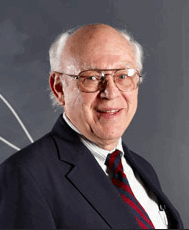Notice: For those of you who are using the 6th or older edition of the textbook, you can learn about olefin metathesis by clicking here.
Reading Assignment: Heats of Formation and Heats of Hydrogenation
1. Read Degree
(Elements) of Unsaturation. What is the molecular formula of Prozac? Draw its structure? Confirm its degree of unsaturation by computation (show work). Draw an acyclic compound having the same formula as Prozac (there are many). Does it have the same number of degrees of unsaturation?
2. a) Determine the heat of formation of 3-methyl-1-pentene.
Use the heat
of formation tables to determine
typical heats of hydrogenation for monosubstituted alkenes
and to determine the heat of formation of the the reduction
product of 3-methyl-1-pentene. Show work.
b) Calculate the heat of
hydrogenation of (E)-and
(Z)-3-methyl-2-pentene. Show work.
c) Use a diagram to illustrate that the difference in the
heat of hydrogenation of the two geometrical isomers in 2b
is equal to the difference in their heats of formation.
Which isomer is more stable based upon the heats of
formation? Why?
d) There is only one monosubstituted alkene having the
carbon skeleton of the (E)-and (Z)- isomers in
2b. What is its structure? Assuming that ΔGo
= ΔHo, which of the three isomeric alkenes
would dominate in an equilibrium mixture? How much heat is
liberated in the isomerization of the monosubstituted alkene
to the (E)-isomer? Show work. Add the monosubstituted
alkene to your diagram in 2c and illustrate the heat of
isomerization.
Paul Sabatier
1912 Co-Nobel Prize in Chemistry
Hydrogenation by Metal Catalysis
